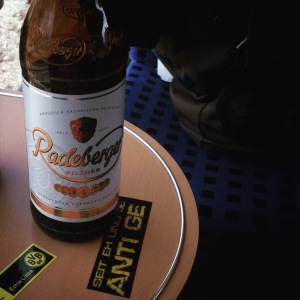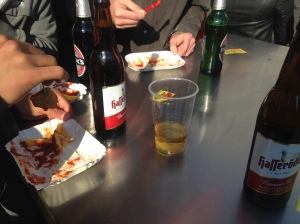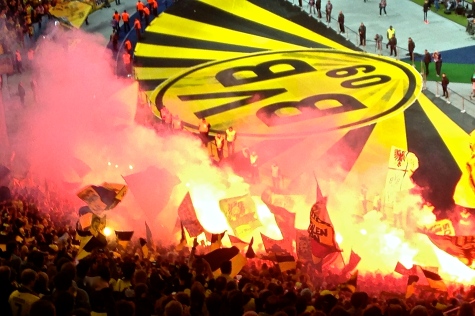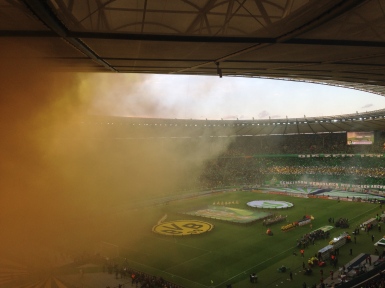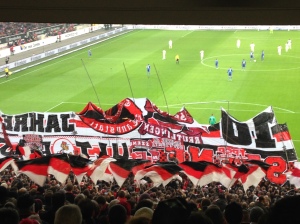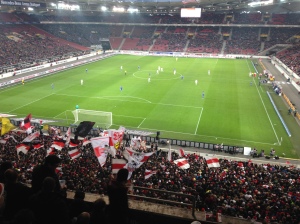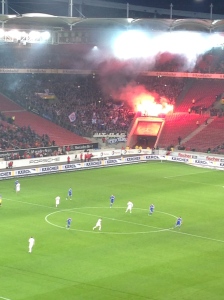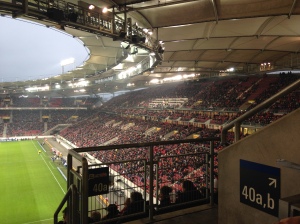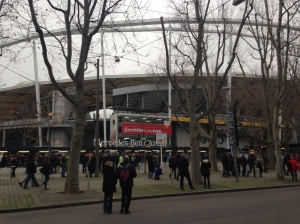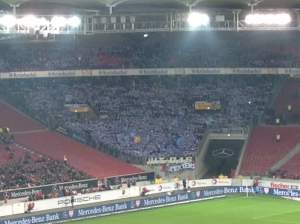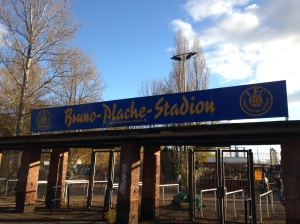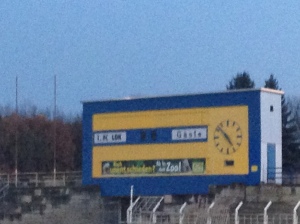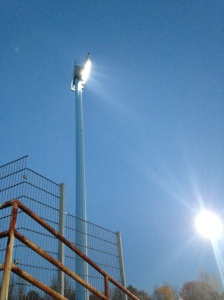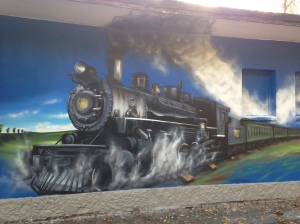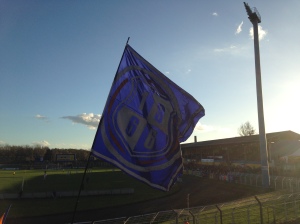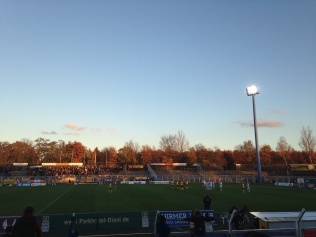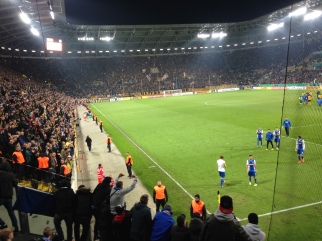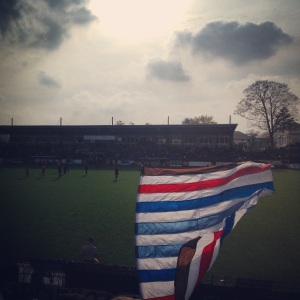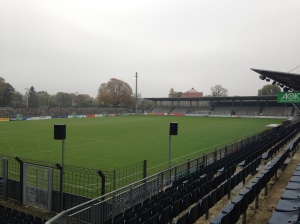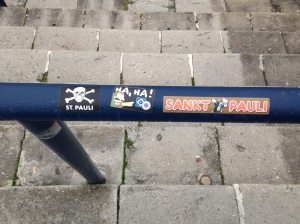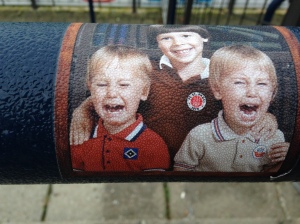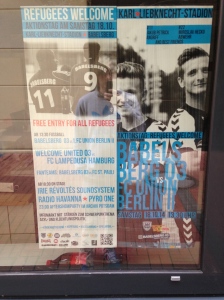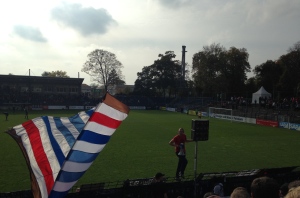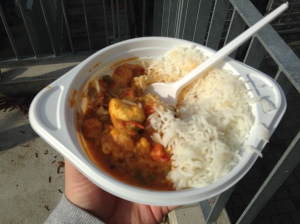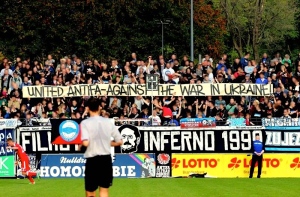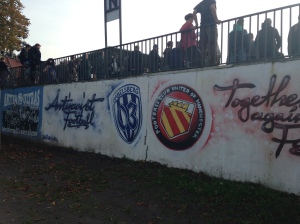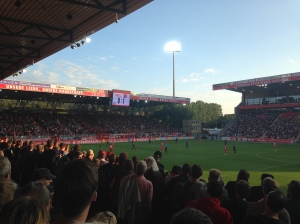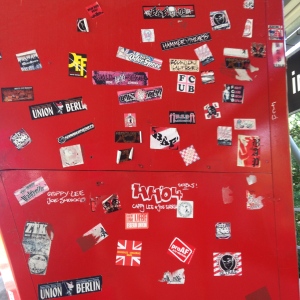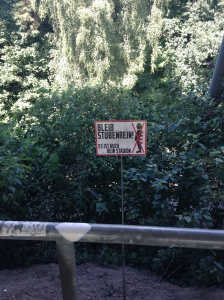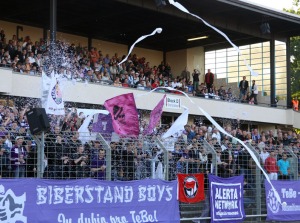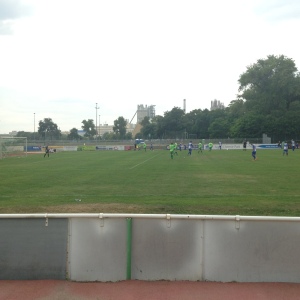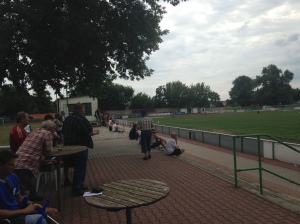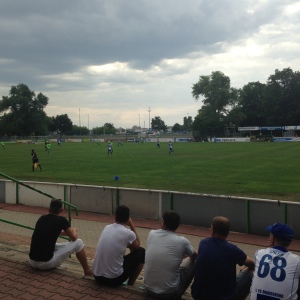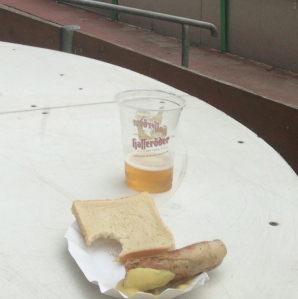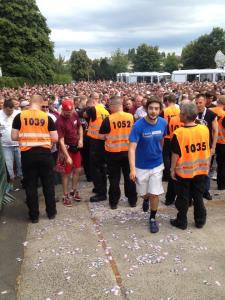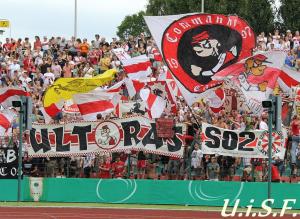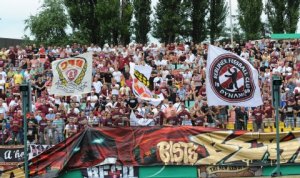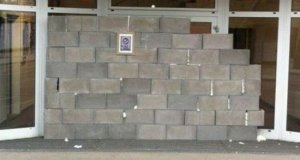The most famous domestic cup in the world has to be England’s FA Cup, a cup where every club in every tier is eligible to potentially win the thing, where a team of amateurs has the chance to unseat a team of paid professionals. Germany has their own version of such, the DFB-Pokal, translated to the German Football Federation Cup. Not exactly as known worldwide or as open as it’s English counterpart, the DFB-Pokal still gives plenty of chance for upsets, Cinderella stories, and intriguing storylines. Rules of participation are as follows (via Wikipedia):
“The DFB-Pokal begins with a round of 64 teams. The 36 teams of the Bundesliga and 2. Bundesliga, along with the top four finishers of the 3. Liga are automatically qualified for the tournament. Of the remaining slots 21 are given to the cup winners of the regional football associations, the Verbandspokale. The three remaining slots are given to the three regional associations with the most men’s teams. They may assign the slot as they see fit but usually give it to the runner up in the association cup. As every team is entitled to participate in local tournaments which qualify for the association cups every team can in principle compete in the DFB-Pokal. Reserve teams like Borussia Dortmund II are not permitted to enter.”
Many in England have said that “the magic of the cup” is dead. During my two experiences with the DFB-Pokal, (I went to a second round fixture this past year, which I wrote about here) I have found that there is a great deal of mystique, magic, and interest, still surrounding the DFB-Pokal (I also went to a first round fixture back in August of 2013, back when I was first getting into groundhopping). The nice thing about the cup is it has the potential to present match-ups you would otherwise never see. One that springs to mind for me this past year was Bayer Leverkusen- 1. FC Magdeburg. Magdeburg from the Regionalliga (4th tier) nearly upset Bayer Leverkusen at home. The two are seperated by 3 tiers, 100’s of kilometers, and a few decades of vastly different history. Another was Dynamo Dresden and Borussia Dortmund. Two of the most feared home field advantages and passionate sets of supporters in the country squaring off. One of the most successful teams in the Germany in BVB, against one of the East’s most storied clubs who has recently fallen on hard times and is the the 3. Liga, Dynamo Dresden.
I play with a Kreisliga club, which is the 8th tier of German football. The Pokal is not impossible to reach for a club like mine, but it is damn near close. In order for my club to qualify we would need to: 1) win the Kreis-Pokal (regional cup). 2) win the Landes-Pokal (state cup).
The Match:
The question I have been asked most is how I managed to obtain a ticket to the final? Well, many Bayern fans purchased tickets to the final thinking their team would be in it (rightfully so). So, when Bayern lost in the semis to BVB on PK’s many Bayern fans sought to get rid of their tickets. A friend of mine (BVB fan) had decided to buy tickets with his Bayern mates hoping for a Bayern-BVB final. So, when Bayern lost, he reached out to me and asked if I would be interested in buying one of his Bayern mate’s ticket. I said absolutely.
The day of the match I took the train from Dessau, where I am living for the summer, to Berlin. The final was at 8:00 PM. I got on the train at about 12:30. When I arrived at the platform I was greeted by about 30 black and yellow clad BVB supporters. I was planning on sleeping during the ride, anticipating an afternoon and night full of beer and celebration. After about 15 minutes into the ride it was evident that this would not be the case.
The Dortmund supporters occupied my car and brought the party with them. A wide variety of chants and songs were broken out and the beer flowed freely. Turns out they were the Dortmund supporters group of Leipzig. I eventually was handed a beer and told to sing. Some of the chants I knew, some I didn’t. (Many clubs in Germany share chants with the same cadence or rhythm, just with slightly different lyrics). I asked one of the guys how many times a year they make it to Dortmund matches, he said about 4 or 5 . I then asked if they were Chemie or Lok fans, the guy said he was for Lok, but the group was quite split. I didn’t ask about Red Bull for obvious reasons (one of the first things the group did upon boarding the train was plaster the car with anti-RB and anti-Schalke 04 stickers). The group wasn’t going to the match, rather just going for the party and to attend the public viewing in the city.
Eventually when we got to Berlin, the group of Dortmunders got off at the station “Zoologischer Garten” which was where the Dortmund fan fest was. I got off at the Hauptbahnhof. At the Hauptbahnof was the Wolfsburg fan fest. A little underwhelming for a cup final. However, it was early in the day.
I then caught the U-bahn and went to check into my hostel and meet my friends. We spent the afternoon walking around various parts of the city, beers in hand. It was a beautiful day and Berlin had temporarily turned black and yellow. The entire city was buzzing in anticipation of the cup final.
Late afternoon we set out toward the Dortmund fan fest. We arrived a bit late and the Dortmund supporters were already heading toward the S-bahn in droves. We grabbed a currywurst (A Berlin specialty) and then hopped on the S-Bahn ourselves. The Olympiastadion lies in the far west of Berlin. You simply can’t walk there from the center of the city, public transit is a must. On the train we encountered a Hertha fan, a local Berliner, who was either drunk, delusional, or both, who kept trying to explain Hertha was a better side than both playing in the final that night. Needless to say we, and those around us, had a good laugh at that.
We finally arrived at the stadium station. We were greeted by even more black and yellow. Green was a rare sight. The Olympiastadion is outside the city enough where there are swathes of space around the stadium for beer tents, bratwurst stands, and so on. We loitered outside the stadium for a while soaking up the scene before heading in.
This was my second time at the Olympiastadion. I had already seen Hertha play there two years before while in the 2.Bundesliga against Engergie Cottbus. The Olympiastadion is, with the Rose Bowl, the most immaculate sporting venue I have ever witnessed. It is a beautiful structure with immense historical significance. The stadium hosted the 1936 Olympics. The very Olympics where Hitler was defied by Jesse Owens’ four gold medal performance. Owens now has a street named for him near the stadium as well as a secondary school. The stadium also hosted the 2006 World Cup final, and is scheduled to host the 2015 Champions League final.
If you are ever in Berlin, it is worth a visit, I would however recommend to do a tour on a non-match day. When Hertha plays there, it rarely sells out, and the track around the field makes the viewing experience less than ideal. The stadium also does not sell alcoholic beer for Hertha matches, if I recall correctly. What is worth a visit though, is the club across the city in Köpenick, Union Berlin.
Entering the stadium took a while as there were a series of checkpoints to pass through and the Germans aren’t exactly the best at queuing. We took our seats in the upper ring, in the Dortmund section. Our vantage point was actually quite good, even if my photos don’t necessarily reflect it. We had a very clear view of all three Wolfsburg goals on our end.
The Dortmund end (the majority of the stadium, really) exploded when Aubameyang put BVB up 1-0 inside the first 10 minutes. The excitement was short-lived though, as Wolfsburg scored three unanswered goals in the first-half. Sadly, there would be no scoring in the second-half. In my opinion, Wolfsburg had the better squad and played a far better match and completely deserved the win. I was, however, cheering for a BVB victory and was disappointed they were not able to pull it out, especially given it was Klopp’s last match in charge.
The Dortmund support was on point the whole match. The ultras, who were below us to our left, put on a pyro show at the beginning of the match and after halftime. The stadium, according to the looks of it was 70% Dortmund, 30% Wolfsburg. Wolfsburg has a reputation in Germany as having weak support. They may not have the numbers of other clubs on their success level, but I found their fans passionate and enthusiastic. For example, they put together a few very nice tifos. The demographic of the two fan bases was also interesting to note. The Dortmund fan base was largely comprised of 18-35 year olds. Whereas the Wolfsburg fans seemed to be more families and older men. Of course there are exceptions both ways, just something that stood out to me and I took note of.
After the match, the stadium remained full. Dortmund fans stayed to give their legendary manager Jürgen Klopp one final sending off. It was an emotional moment that I’m glad I got to experience, as he walked over the the Dortmund end, and said one final good-bye to the supporters. There were reports after the match he was crying while he did so, and I wouldn’t doubt it. He will forever be remembered in Dortmund as a larger than life icon who brought Dortmund back to the forefront of German football.
The Wolfsburg fans, of course, stayed for the cup presentation.
I have had many memorable experience while groundhopping. This particular experience ranks near the top. The importance of the match, standing with the passionate Dortmund supporters, watching players like Marco Reus, Mats Hummels, Kevin de Bruyne, and Andre Schürrle live as well as seeing the legendary Jürgen Klopp’s last match for BVB made it a night I won’t soon forget.

